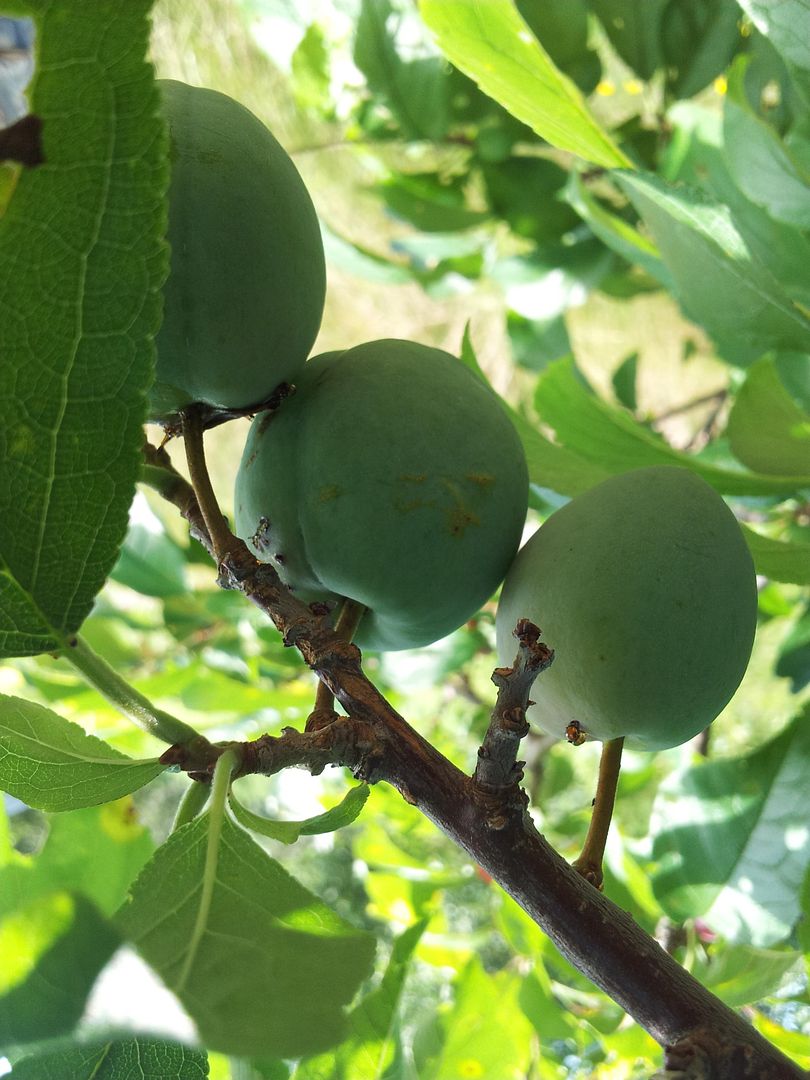
Plums plumping up in the holistic orchard.
It’s always great when people who you meet on the internet live close enough that you can pop by for a visit. This is the case for the Higgs that live a little over three hours South-west of me. I can’t remember our first conversation, whether it was about rare fruits, mycorrhizal associations, raised beds, reskilling or fruit tree propagation or perhaps it was some happy union of all those things. Mike is one of those rare growers who stares tradition in the face and decides whether or not it’s being honest. He’s a researcher and an experimenter reading about past and present gardening trends, then trying them out in his garden to see if they accomplish the goals of feeding his family without unnecessary work.
They draw inspiration from a variety of sources including John Jeavons (growing fertility and nutrition), Emilia Hazelip (low soil disturbance), Massanobu Fukuoka (work with nature and do as little as possible) and Mel Batholemew (intensive planting in raised beds).
Tell us about your farm:
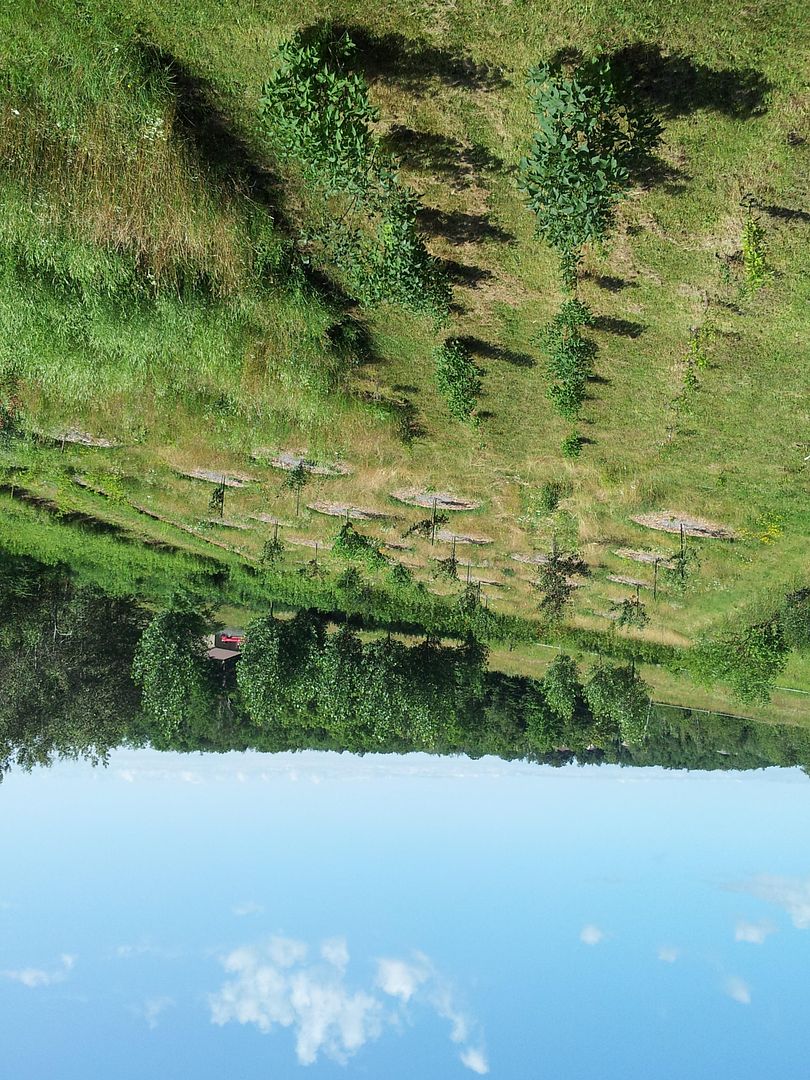
There orchards and other tree plantings include many unusual fruits and nuts.
North of the Saint Lawrence, in South-Eastern Ontario’s rolling hills is the Higgs farm: a diverse planting of fruits, nuts, perennials and vegetables. Planted in mulched circles are an abundance of crops from perennial ground cherry to young heartnuts surrounded by tumbling squash. Laid out in staggered rows is the formal orchard, now inspired by Michael Phillips’ The Holistic Orchard, that includes rare fruits for these parts such as quince, medlar, persimmon and beach plum. Just beyond is a row of willow and poplar, propagated by softwood cuttings, that is being grown to produce ramial woodchips for the orchard and craft material. It is banked by a mulched and Dutch while clover covered berm to capture the water and direct it to the willow roots instead of it draining away downhill. Just in front of the big bay window of their home are a series of raised beds with fruit crops like haskaps and raspberries and traditional vegetables like potatoes, beets, carrots, and parsnips. There are also more rare items such as perennial wheat and rye from Tim Peters.
In the beginning:
Cutting trails in their back forest shortly after they moved to their new country home in 2008, they found a beautiful, unblemished yellow apple. “It was a potentially superior apple from one of the wild trees.” Mike wanted to propagate it but knew that he would need rootstock. "Getting some was a problem because there's little available in Canada for the small grower. Learning how to graft and produce more rootstock wasn't as big a problem although few bother with these skills anymore." He begin to research and One Thing Lead to Another. This is the title of his blog where he details experiments on how to propagate plants by techniques such as trench layering and root cuttings among other things.
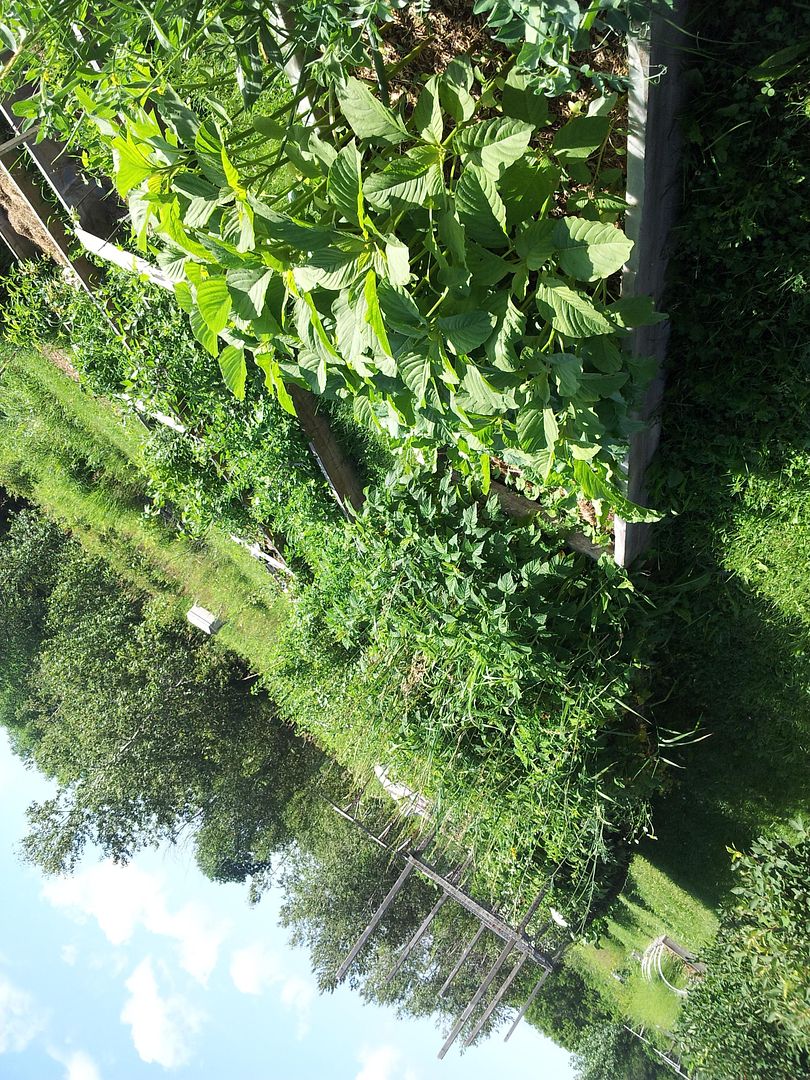
Raised beds with veggies, some small fruit and a propagation bed for root stock.
Joyce’s early attempts at vegetable growing were also frustrating. Turning up the soil in what had been an old grazing field for llifestock awoke every thistle imaginable from slumber. It took hours to weed around a few strawberries. “This was not what I had signed up for,” said Joyce. Then they learned about square foot gardening and mulching. They consider mulching an extremely essential and often overlooked part of gardening “Look at this soil,” Mike says as he pulled back the weed excluding mulch to show moist workable soil. Joyce now shares what she has learned in a column in The Link, a magazine ‘celebrating a creative lifestyle’ in the area. She also sells some plants and preserves at the farmer’s market.
The Orchard:
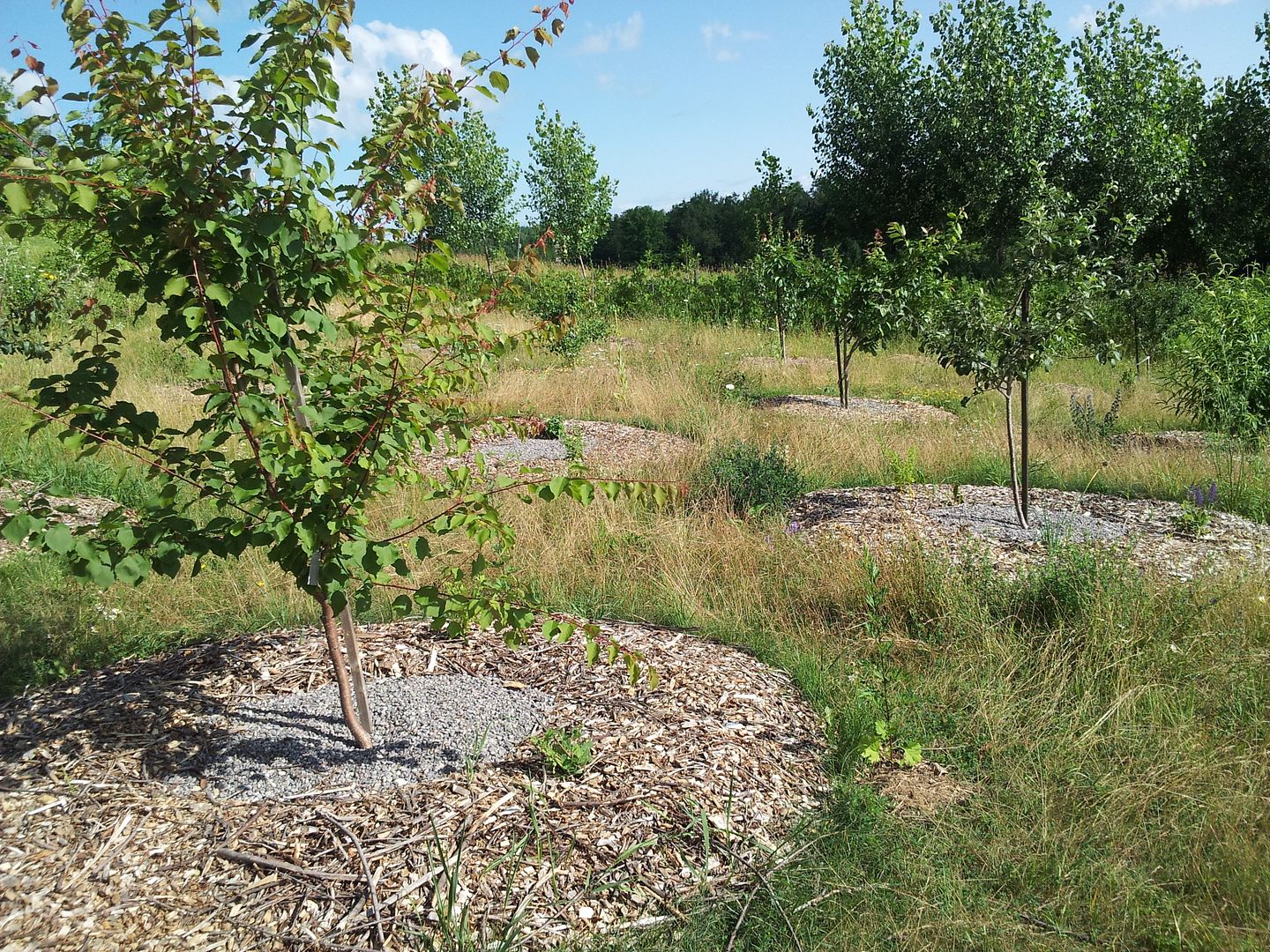
Concentric mulch circles of pea gravel for drainage and to prevent critter nests and mulch to encourage beneficial fungal associations.
Though they have planted trees throughout their ten acres including butternuts and red maples in the back bush and fruit and nut trees such as mulberry, sea buckthorn, University of Saskatchewan cherries, hazelnuts, heartnuts, hardy kiwi, Virburnums, rosehips along the embankment in front of their house, up the driveway and in the fields, their holistic orchard catches the eye right away. With the help of a WWOOFer, the conventional orchard of staggered rows of young trees was modified this year based on the holistic ideas of Michael Phillips. It was mulched with an inner ring of pea gravel for drainage and to give rodents no nesting material and an outer ringof ramial woodchips to foster mutualistic fungal relationships important to tree health. The mycorrhizae get food in the form of carbohydrates from the plant’s photosynthesis and the plant gets access to water and nutrients from an expanded root system. Plants may then be healthier and more resistant to drought.
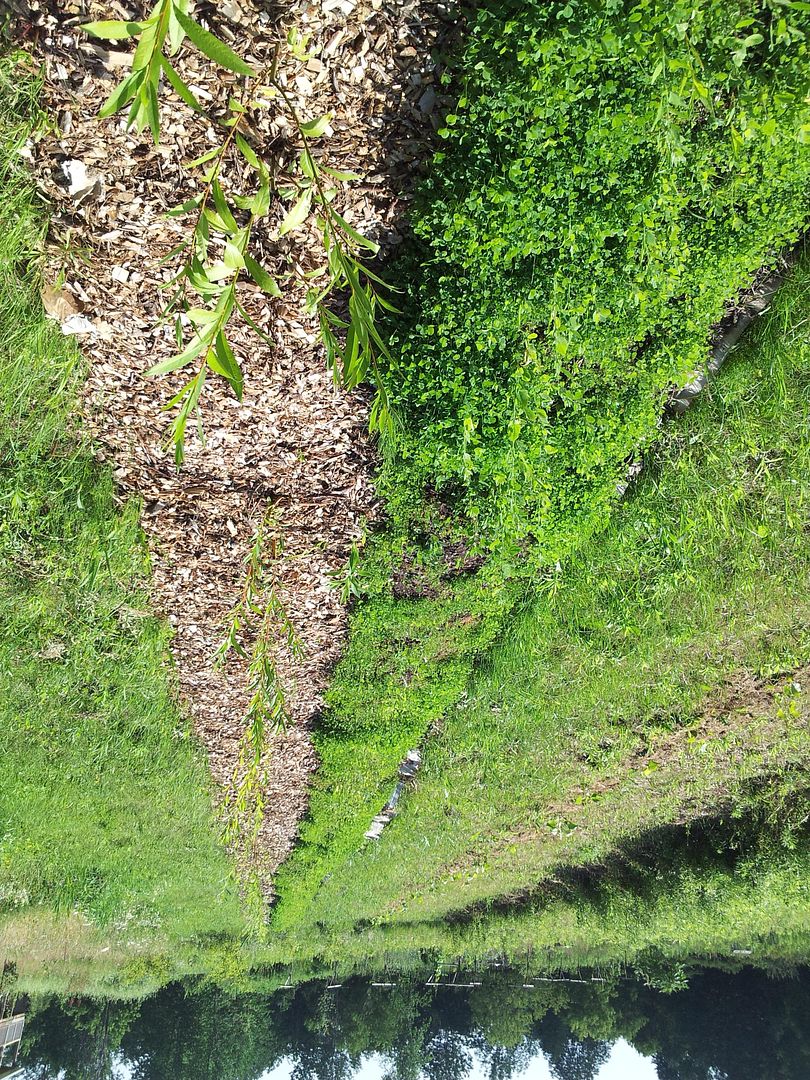
Willow cuttings beside white clover planted berm.
When I asked why he liked holistic orchardist Phillips’ approach, Mike said, “When I read the word balance, I said, ah-hah. That’s what it’s about. If I get rid of all the aphids, the ladybugs have no food and they disappear as well. If I want ladybugs to keep the aphids under control naturally, I need some aphids." Around the concentric circle plots of trees is a wildflower meadow to increase biodiversity in order to attract a permanent population of pollinators and predatory of pollinators and predatory insects. Along with Coreopsis and Echinacea, the so-called weeds such as mullein, oxeye daisy, bladder campion and Queen Anne's lace flourish in this unmown area. They have also included nutrient accumulators such as nettle and comfrey to act as a source for chop-and-drop mulch, compost teas and soil drenches.
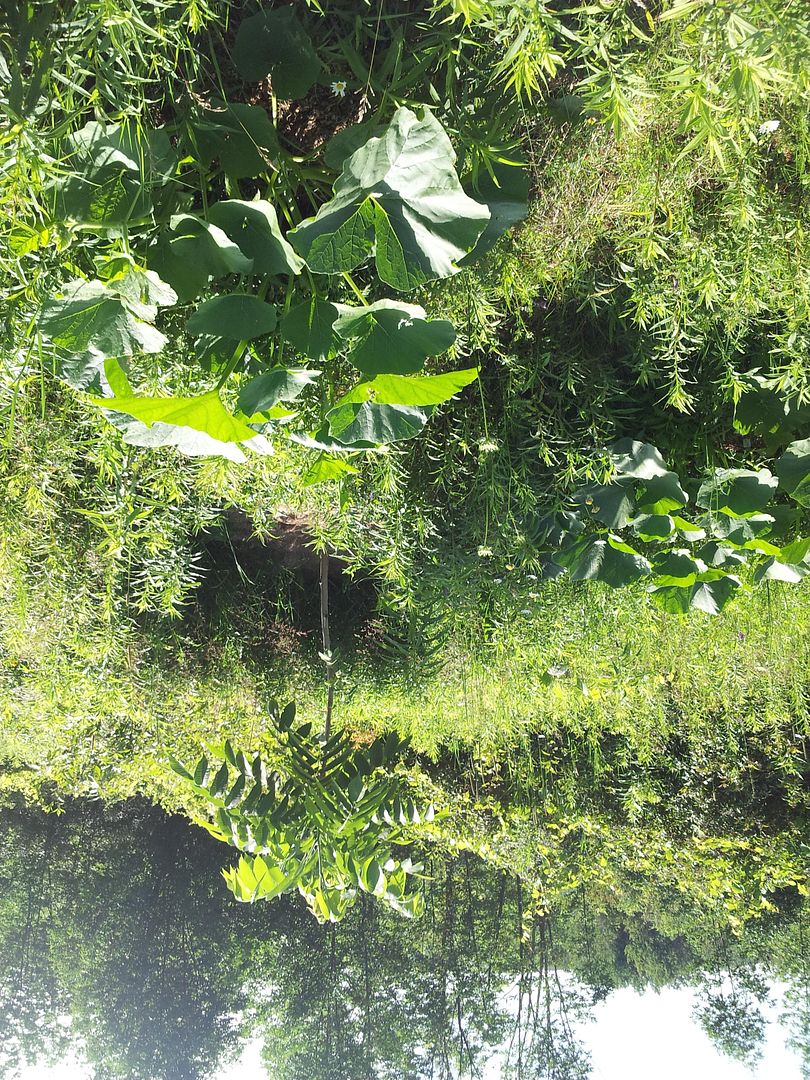
Squash growing near a heartnut in the open field. Note the mulch under plants.
Away from the orchard, in the uncut areas of the field, he is even experimenting with planting unruly vegetables such as squash and tomatoes in ways that minimally disturb the soil. For example, squash is planted by laying down a thick layer of wetted and compressed grass clippings followed by a layer of partially finished compost and then a 3 inch layer of mature, plant-based compost for seeds to germinate in. As soon as the seeds are upping and growing, more mulch is added. The squash vines wander where they want beyond their mulched cradle.
This technique aligns well with the Organic Creed of feeding the soil. In order to avoid too much importing of materials, Mike is looking into plants that produce high biomass such as sterile Miscanthus giganteus, and fast growing woodies to coppice like poplar and willow.
Plans to expand:
Lining the wrap around porch are pots of all shapes and sizes with plants and cuttings growing until they are big enough to join the lush gardens below.
One detail that I was particularly interested in was the trenching bed where he produces more rootstock to graft on rare scion wood. In a raised bed (constructed of pressure treated wood lined on the inside with vapour barrier to keep the wood and soil from being in contact)* he lays the bare root stock tree on its side, coaxing the branches upwards. Hopefully these branches will root enough that they can be detached as whole trees. "The beds are filled with pure plant compost which is very rich. It's also very friable which allows trees to be dug up easily and without damage."
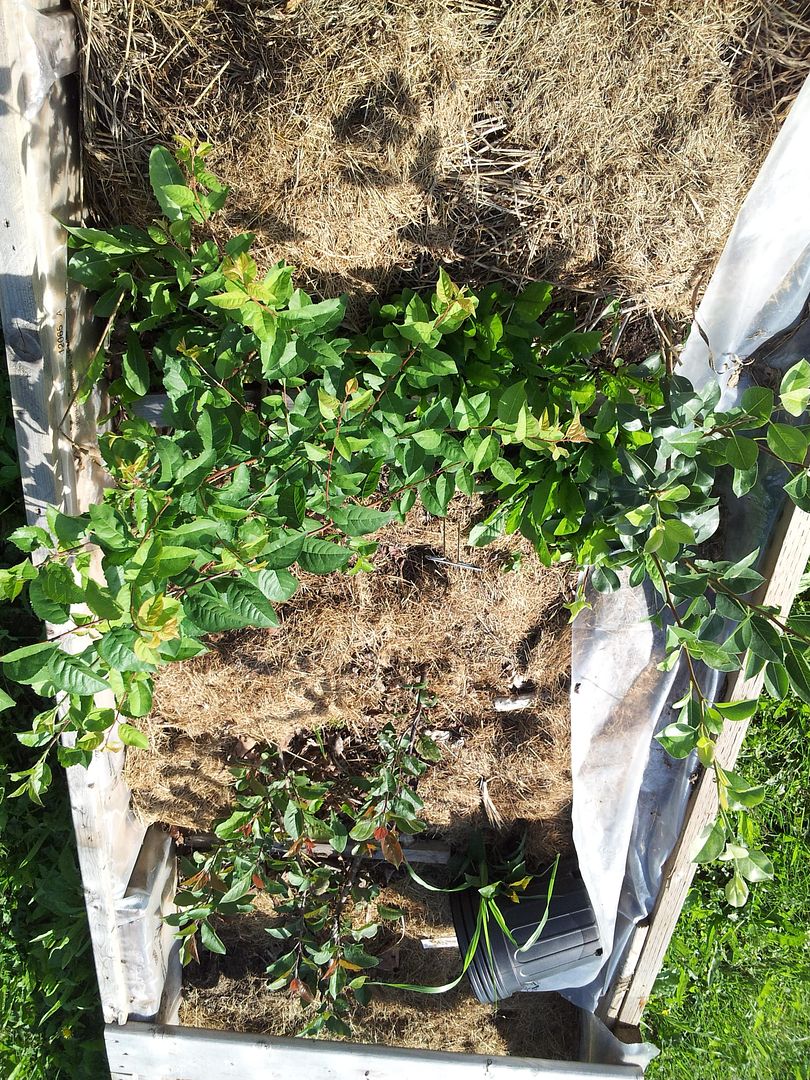
Propagation bed for root stock and more.
You can tell he is developing a feel for when a plant part will sprout roots. He speaks of dormancy and the energy burst that occurs when plants emerge.. He points out suckers coming from the rootstock of various trees with obvious glee.
Food Forests
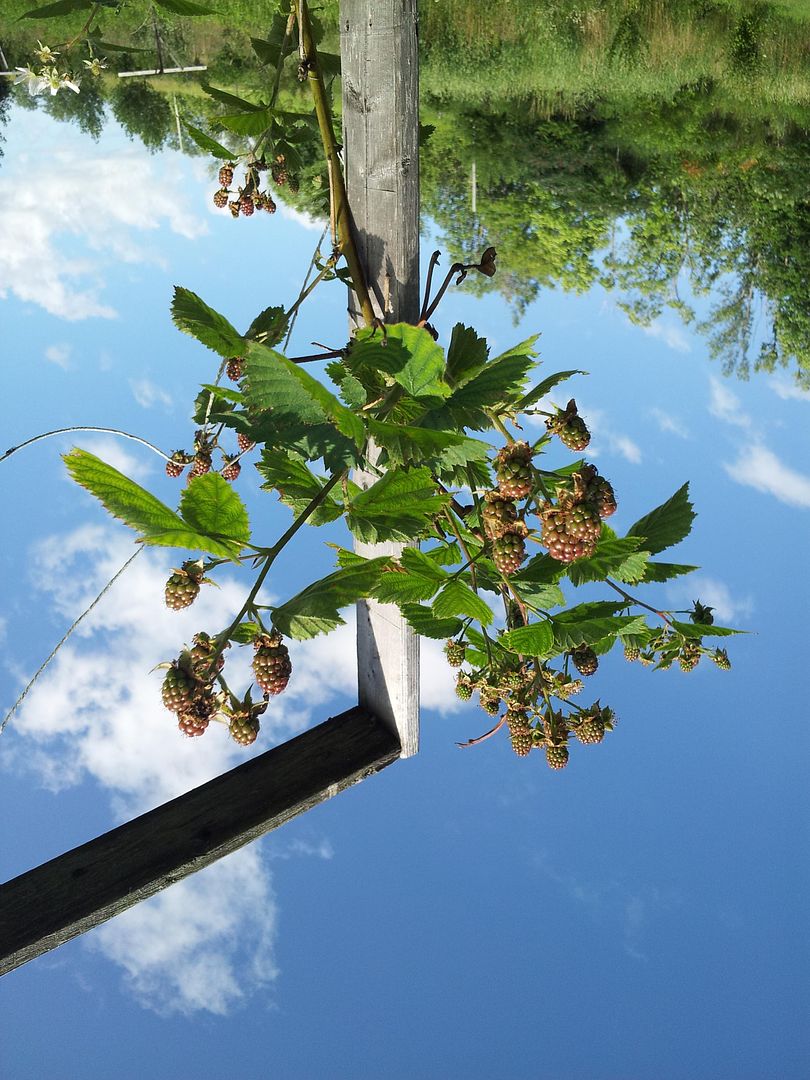
Nice thornless blackberry being prolific
I asked him what he thought about food forests. “I’m interested in getting what’s out there in here,” he said as he points to the garden then pats his stomach. “Food forests have some problems in cold climates. It is different from warm regions where food can be grown all year round, even parts of Europe. Here, we have to store nutrition to take us through the winter. Perennial vegetables are heavy on greens that don't store well, and those that do may be difficult to harvest. The vegetables that store well are mostly annuals - root vegetables, squash, beans and corn. These are the vegetables grown by Carol Deppe, author of The Resilent Gardener."
He also talks about the importance of finding ways to incorporate staple annual vegetables into permaculture designs in our climate. Another part of the Higgs equation is that they are really interested in using what they grow and growing what they need. Using the square foot gardening techniques advanced by Mel Bartholomew, Joyce intensively plants exactly the quantities of carrots, beets, turnips, and parsnip that she thinks they will need through the winter.
They own several canners, an oil press and a hand grain mill. The basement has a couple good-sized cellars for storing vegetables – Joyce showed me some nice looking daikon radishes in sand from last year – and canned goods.
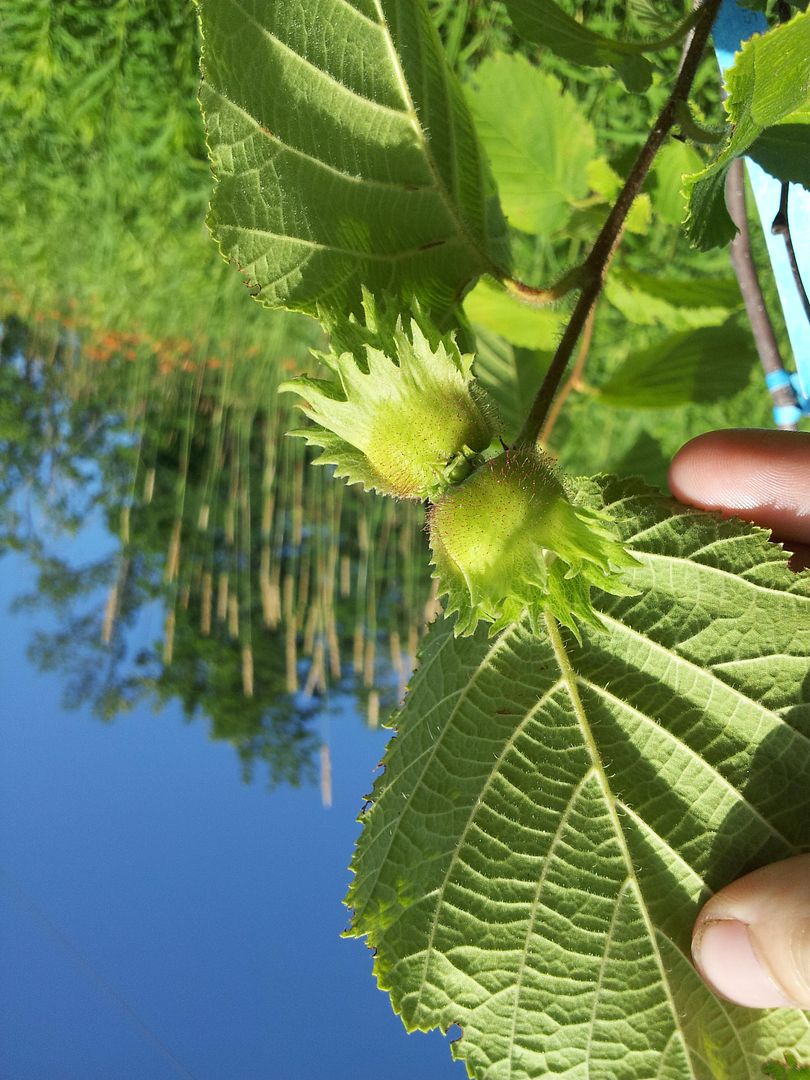
A precocious seedling hazelnut producing very early.
Though Mike’s fruit and nut tree collection continues to grow, he is scaling back the vegetable varieties he uses to those that he thinks are most useful for winter and store well.
I asked him about grains and he gave me an interesting answer. “I had discarded the idea as I didn’t want to till the soil and unleash the thistles as well as being dependent on fossil fuel or having to learn about horses but then I read about perennial grains. If they can produce a useful crop without soil disturbance, they could be useful for the home grower.”
One thing leads to another really does sum up their gardening journey to date. To quote Mike, “It’s a process of discovery, of finding ways to do conventional things in unconventional ways that are regenerative, tread lightly on the land and are minimally disturbing to Nature”

Mike examining some of his sprouts.
More Links (and some I've repeated because they are so good):
http://www.groworganicapples.com/
Ramial Woodchips
Mycorrhizal Fungi
One Thing Leads to Another (Mike Higgs blog)
* Here is a pinterest on raised beds but I'm sure you can find numerous designs. I’ve begun to make a propagation bed myself, lined with harvested softwood trunks infilled with leaf mould and other organic matter.

Inspiring! Makes you want to own a farm :)
ReplyDeleteVery interesting! Thank you forposting this. Yet another blog I now need to follow. :)
ReplyDelete